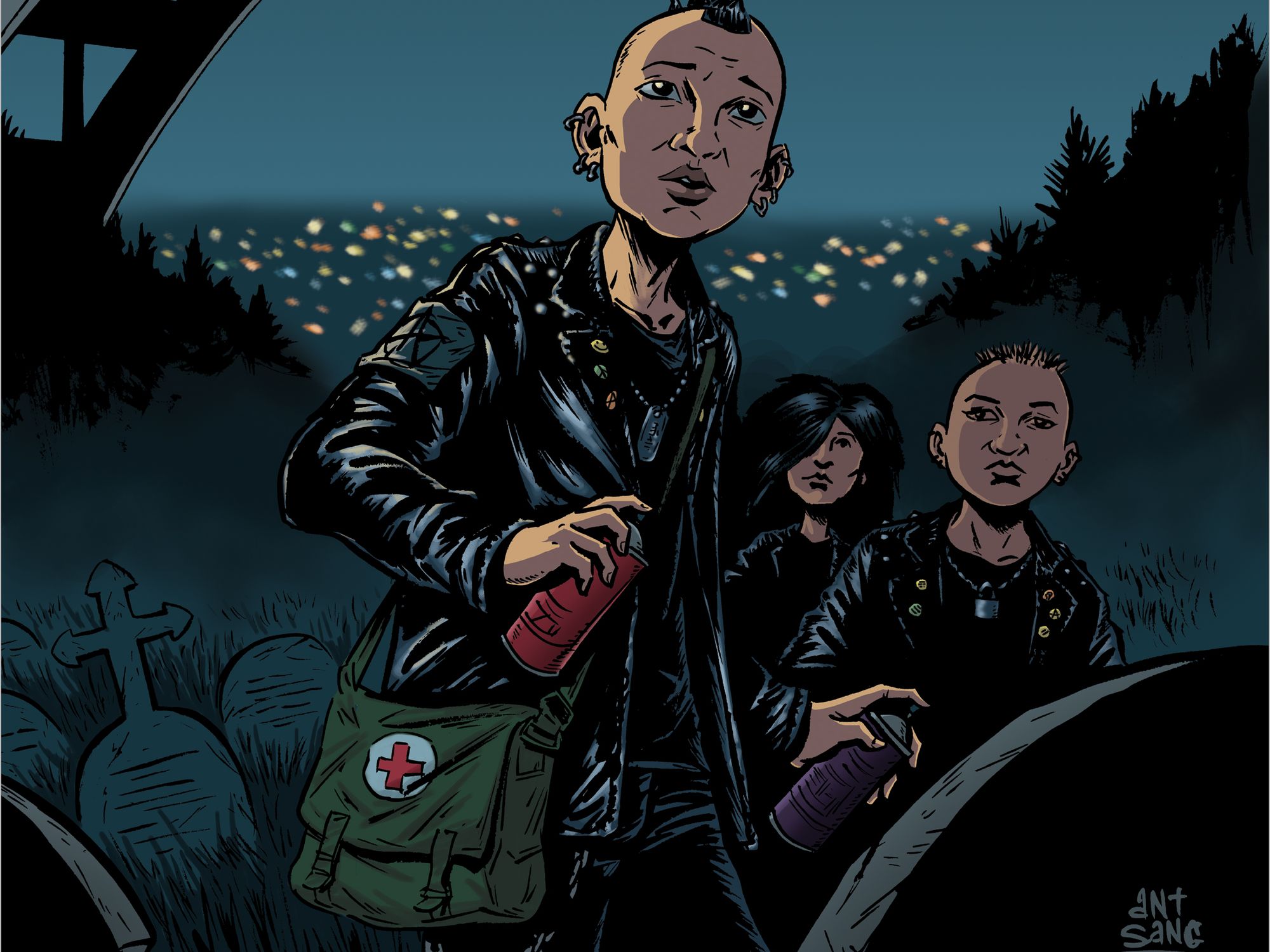Part three of a disorderly A to Z, to be continued throughout this magazine’s six-issue run.
J is for JEALOUSY (and its relations)
‘If you look back at historical stories and news records, there was a particular way of framing Chinese. Pākehā didn’t like the way that Chinese people were able to create their own communities, work extraordinarily hard, and make money.
I think some Māori picked up this discourse that targeted Chinese. But what I’ve always argued is that, as in our own family, that sort of feeling between Māori and Chinese wasn’t present at a grassroots level. We had very close shared values, appreciated those things that we had in common, and were able to recognise the racism that both groups faced.’
— Jenny Lee-Morgan, ‘Diversity Is a Slippery Word’, e-Tangata, 2 June, 2024

Bepen Bhana, For the Love of Leif VII, 2013, oil on canvas, exhibited in The Leif Garrett Fan Club, 2013
Photo by Joseph Griffen
‘Some part of me really thinks I could be that blond blue-eyed Hollywood star, gazing serenely out at the world from within a body that is this age’s representation of Eden. If I could just squeeze myself through my eyes, pour like aqueous humour into the lens of the TV channel, somehow slither into that wonderful body — surely it was always destined for me!’
— Tony Lee, ‘Physiognomy and Lacan’, in The Nervous System: Twelve artists explore images and identities in crisis, 1995, p. 14
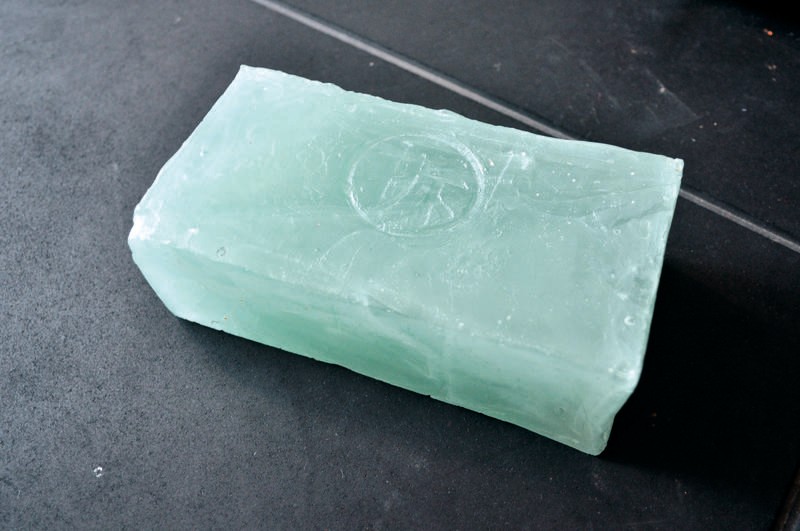
Daniel Malone (working under the name Billy Apple), With All Kinds of Delays, 2009, glass and video documentation. Ngā Puhipuhi o Te Herenga Waka — Victoria University of Wellington Art Collection (VUW.2009.6)
‘I was really interested in what Tautai had done for Pacific artists over the past 30 plus years, in terms of supporting exhibition making and building a robust understanding of contemporary Pacific arts and how that fits within the local context.’
— Amy Weng, on initiating the 2017 Asian Aotearoa Artists Hui, Hainamana, 6 September, 2018
‘I’m inspired by the way all the Pacific artists involved with Tautai support each other, lift each other up and create opportunities for each other. Hyphen hopes to contribute to strengthening and unifying New Zealand’s Asian arts community in a similar way, building on some of the other awesome initiatives that are already happening in the Asian creative sector here.’
— Ana Garcia, on the formation of the artist collective Hyphen, Whitecliffe, 2023
K is for KITSCH
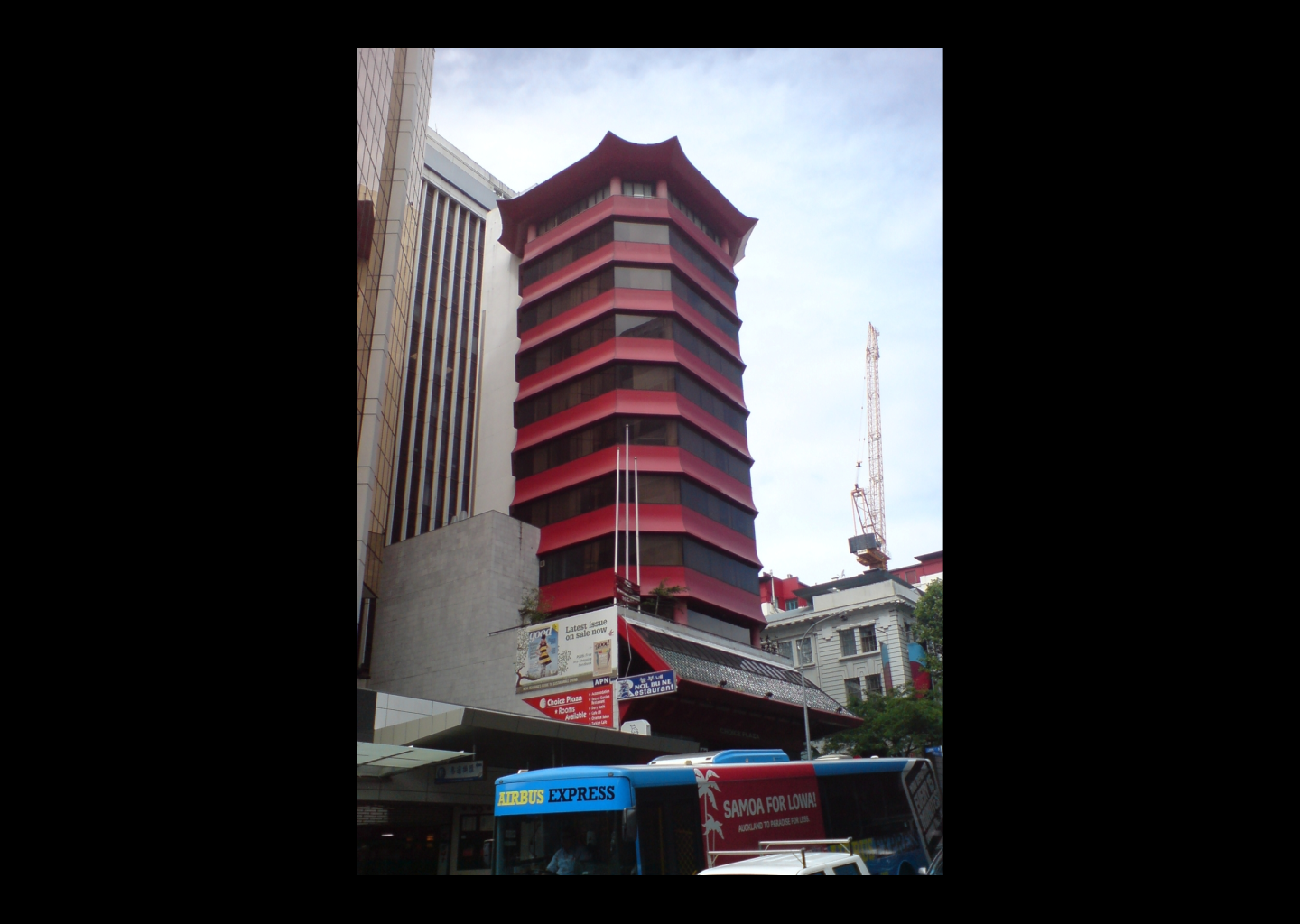
Choice Plaza (formerly known as Orient Towers), Wellesley Street, Tāmaki Makaurau. Designed by Ron Sang, 1989
Photographed in 2009
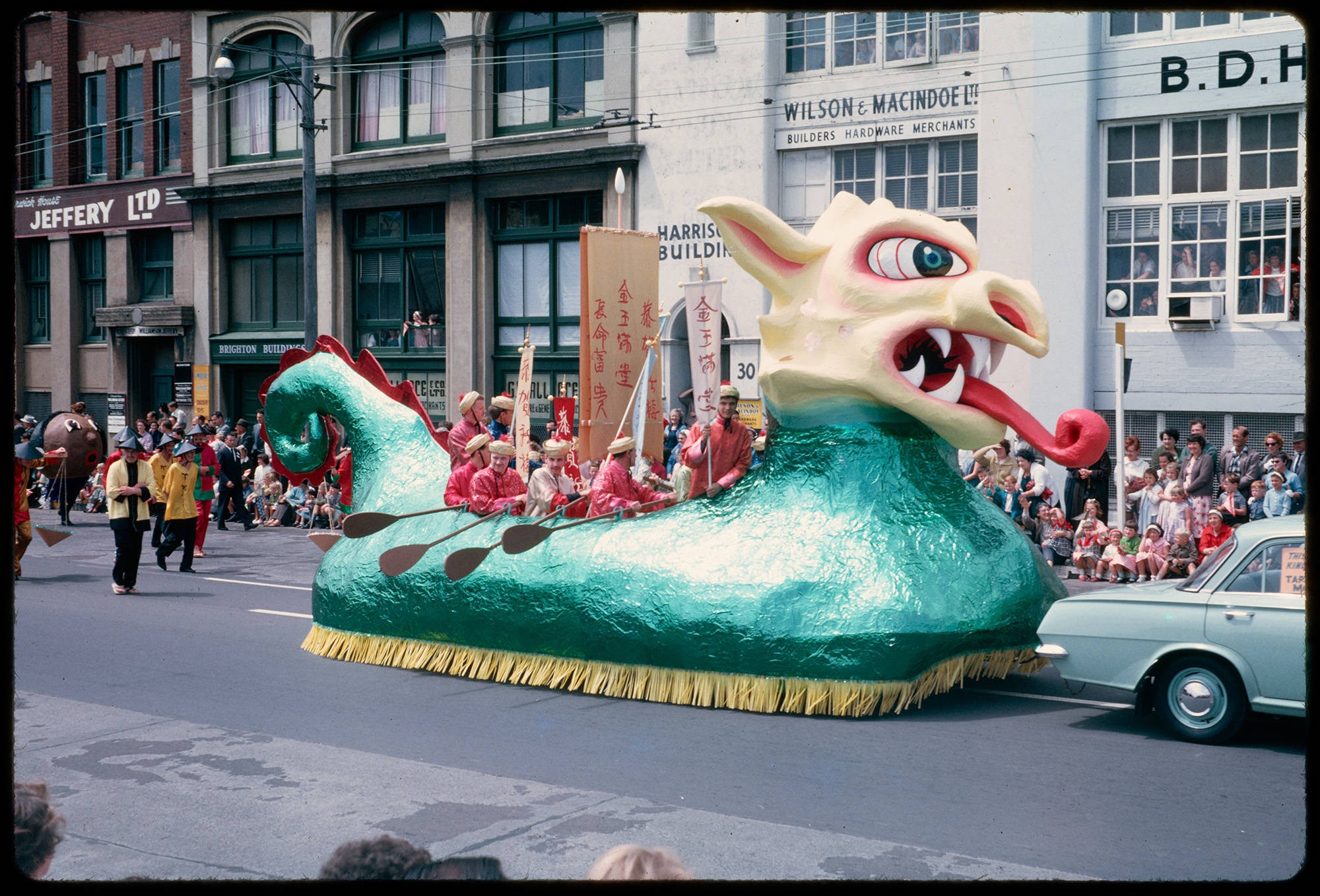
Chinese dragon float in Fanshawe Street for the Farmers Santa Parade, 1963. Auckland Libraries Heritage Collections (1714-00113)

Hawke’s Bay Farmers Co-Op entry in the 1958 Hastings Blossom Festival Parade, depicting the ‘Willow Pattern’ design with willow tree, small bridge and children in Chinese costume. Hastings District Libraries (005010)
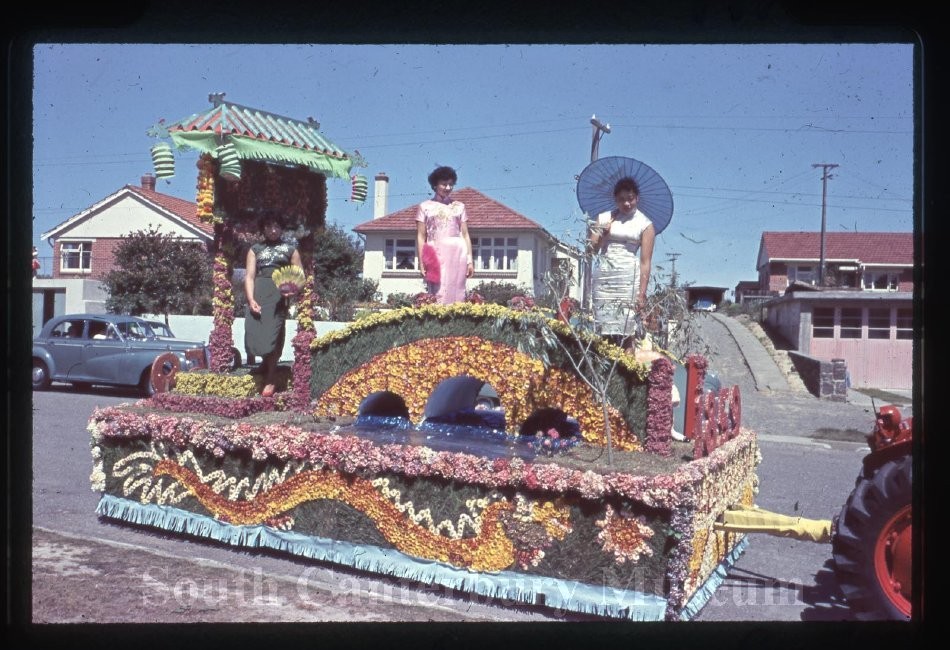
The Chinese Association float, ‘The Garden of Eastlake’, being pulled by a tractor in the 1959 South Canterbury Centennial Parade. South Canterbury Museum (2017/077.008)

Li-Ming Hu, Three diasporic Asian artists and one diasporic Asian curator, made for the occasion of an exhibition in which identity is not mentioned (detail), 2022
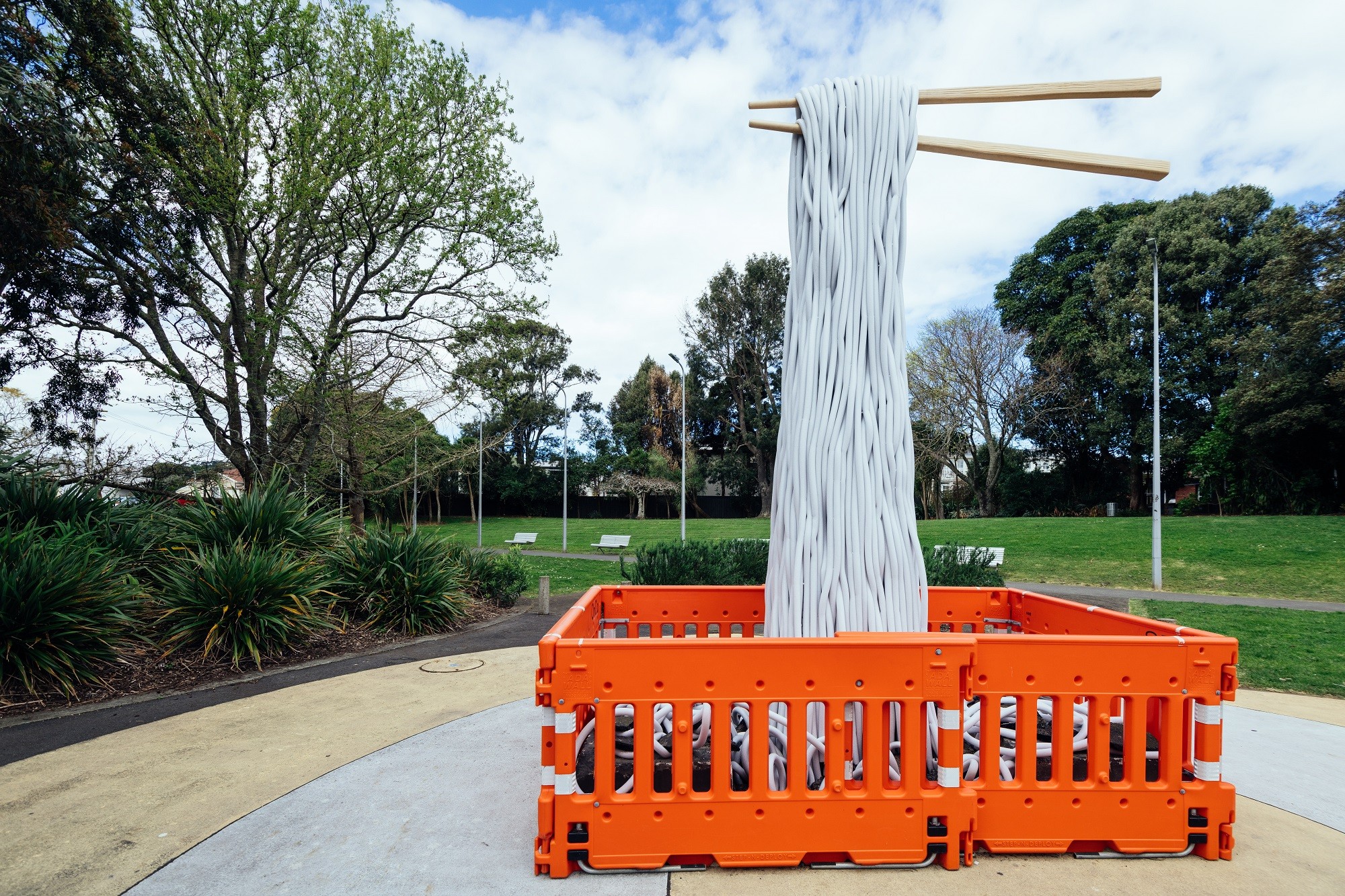
Seung Yul Oh, OnDo, Ballantyne Square, Dominion Road, 2015
Courtesy of Auckland Council
L is for LONELINESS
‘I just want to feel ... that there are other Asian artists doing the same and we are together. That we are being employed for our talent or respect for our culture and background, not just a tick on the box in a diversity list. I want to meet, talk [to] and be inspired [by] other Asian artists.’
— Emerging practitioner (actor), quoted in Enter the Multiverse: Building a stronger sector for our Asian arts practitioners, 2022
‘A few days later my cousin told me his father had been walking past a Chinese shop during the next World War when he realised the people inside were talking about him. His grandfather had had an affair with a white woman, they were saying.
When I asked my uncle, he looked at me wide-eyed. He didn’t know what I was talking about. I asked my father. He didn’t know anything about it, but he understood that it would have been a very lonely life. Because of the poll tax and other discriminatory legislation directed exclusively towards Chinese, very few Chinese women and children came to New Zealand. It would be understandable if some Chinese men developed other relationships.’
— Alison Wong, on the gestation of her novel As the Earth Turns Silver, Academy of New Zealand Literature
M is for MISTRANSLATION
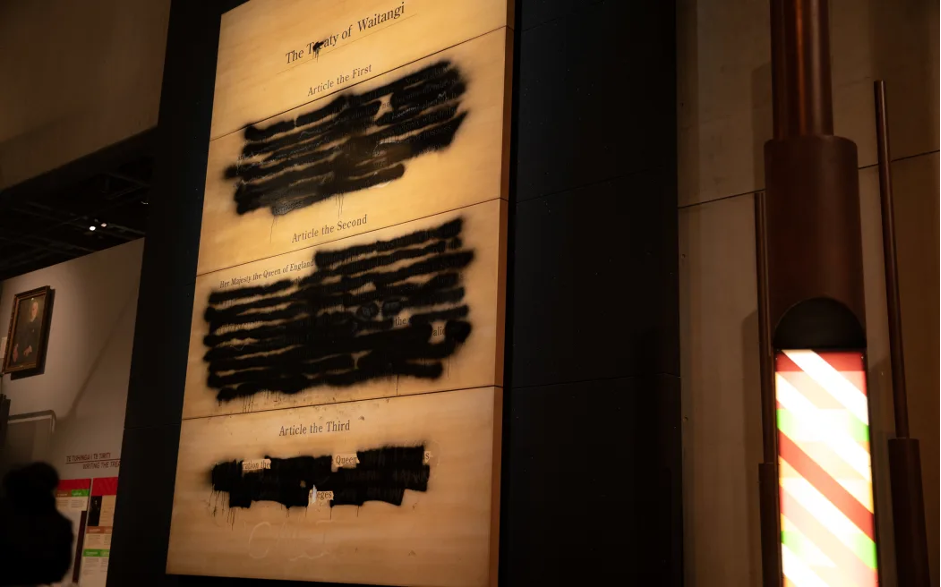
Redaction by Te Waka Hourua of ‘Hobson’s draft’, a disputed English translation of Te Tiriti displayed at Te Papa. After Te Waka Hourua carried out this action on 11 December 2023, Te Papa reported increased engagement with the exhibition. Brooke Pou, curator at Enjoy Contemporary Art Space has also written about the response to this action.
‘Tonight, that same 2002 apology is now formally delivered in Cantonese to value and honour those who suffered the indignity of the poll tax, in their language. … While I understand that the 2002 formal apology delivered in English & Mandarin was welcomed by our NZ Chinese communities at the time, I know that many of the early settlers who were subjected to the poll tax — and their descendants, spoke Cantonese. … I understand that some of the Chinese New Zealanders who were in the room for the original apology — were unable to fully understand either the English or the Mandarin version.’
— Priyanca Radhakrishnan, then Minister for Ethnic Communities, speaking at the re-delivery of the poll tax apology, 2023
‘When I speak in Cantonese it feels like I’m speaking from the heart, it feels more genuine compared to when I speak in English as things need to get translated in my head for it to come out in English. Even to this day, simple things like receiving a phone number, it still gets translated back to Cantonese for me to register. I am aware that as a result of growing up here, there are more complex words that I don’t understand. Sometimes my friends would make fun of my altered accent. I tell them it’s not changed, it’s authentic Cantonese from 1976!’
— Jack Yan, interview excerpt, Chinese Languages in Aotearoa zine, 2022
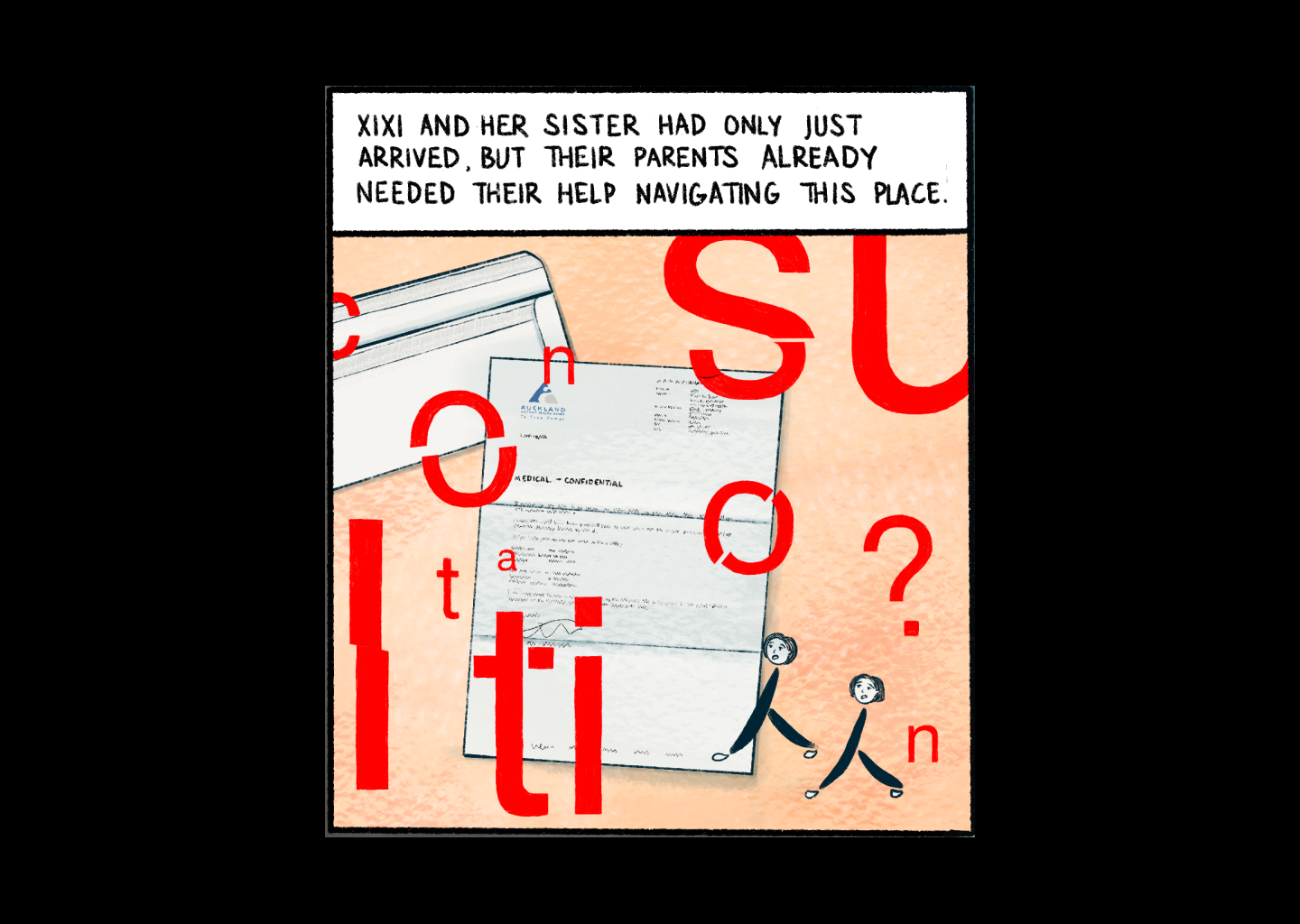
K. Emma Ng, ‘Xixi’s Story’ (excerpt), Chinese Languages in Aotearoa zine, 2022
‘I can’t emphasize enough how different Han Kang’s writing style is in Korean. … But here, it could be argued that Smith’s translation was probably successful because she ratchets up the style. … These embellishments highlight the difference in what appeals to readers abroad. A lack of agency, the ability to decide and make purposeful choices, presents a huge problem for Western readers of contemporary South Korean fiction. … Finally, it would serve us well to remember that “unfaithfulness to the original” doesn’t necessarily mean betrayal, as if the translator carried out wilful acts of mistranslation. For one thing, it presumes a lack of sincerity and respect for the source material.’
— Charse Yun, ‘You Say Melon, I Say Lemon: Deborah Smith’s Flawed Yet Remarkable Translation of “The Vegetarian”’, Korea Expose, 2 July, 2017
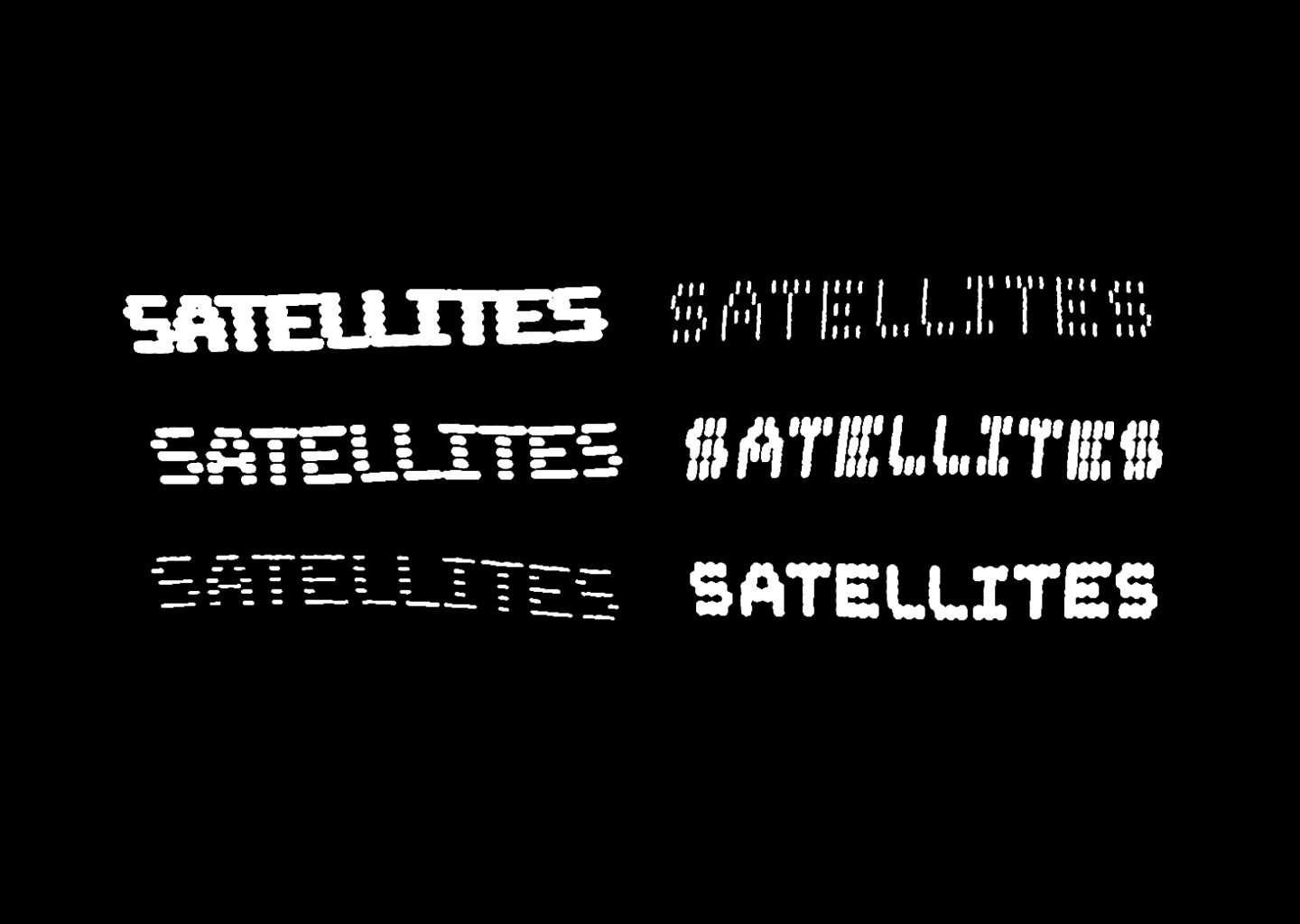
‘The simple visual motif of the expiry date — usually stamped onto cans and other food products — allows us to speak to a few of these ideas at once (as well as being a subtle reference to an iconic piece of Asian cinema, Wong Kar Wai’s Chungking Express):
- A marker of a specific point in time that hints at the storage and archiving of cultural memory.
- A unique label that stretches and warps — one that is never the same twice, reflecting the distortion and acts of translation/mistranslation that take place in migrant cultures.
- Something that adorns every can of pineapple juice, coconut water or preserved lychees … a nod to the dairies and convenience stores that are a cornerstone of migrant businesses.’
— Son La Pham, Satellites designer, 2024


